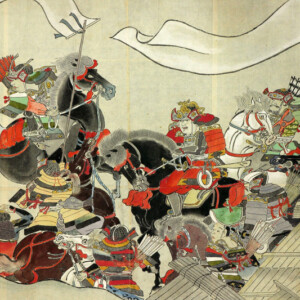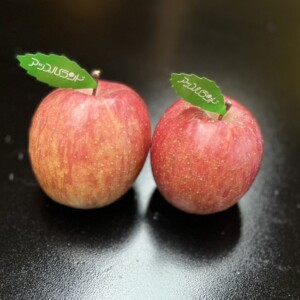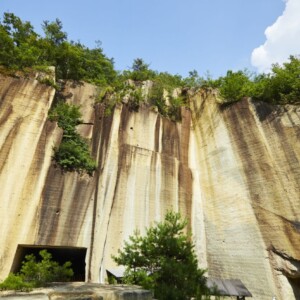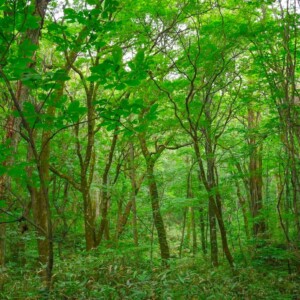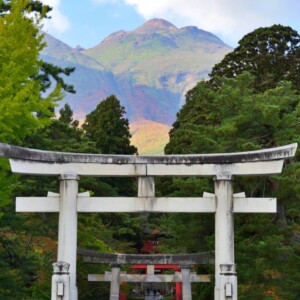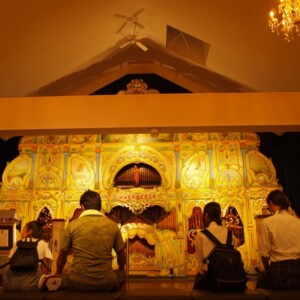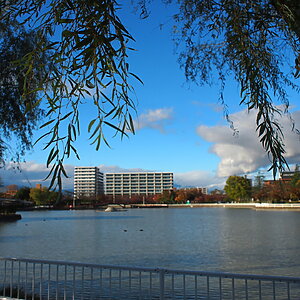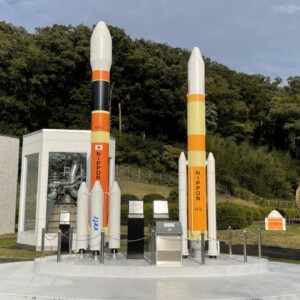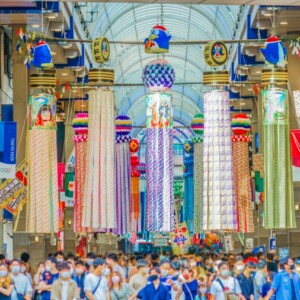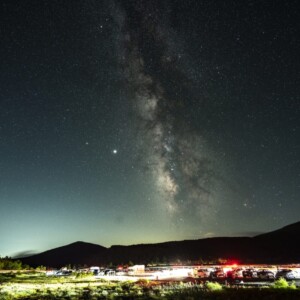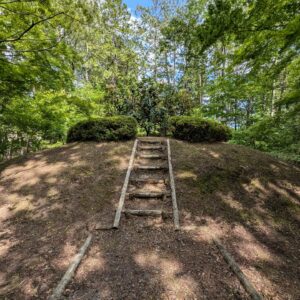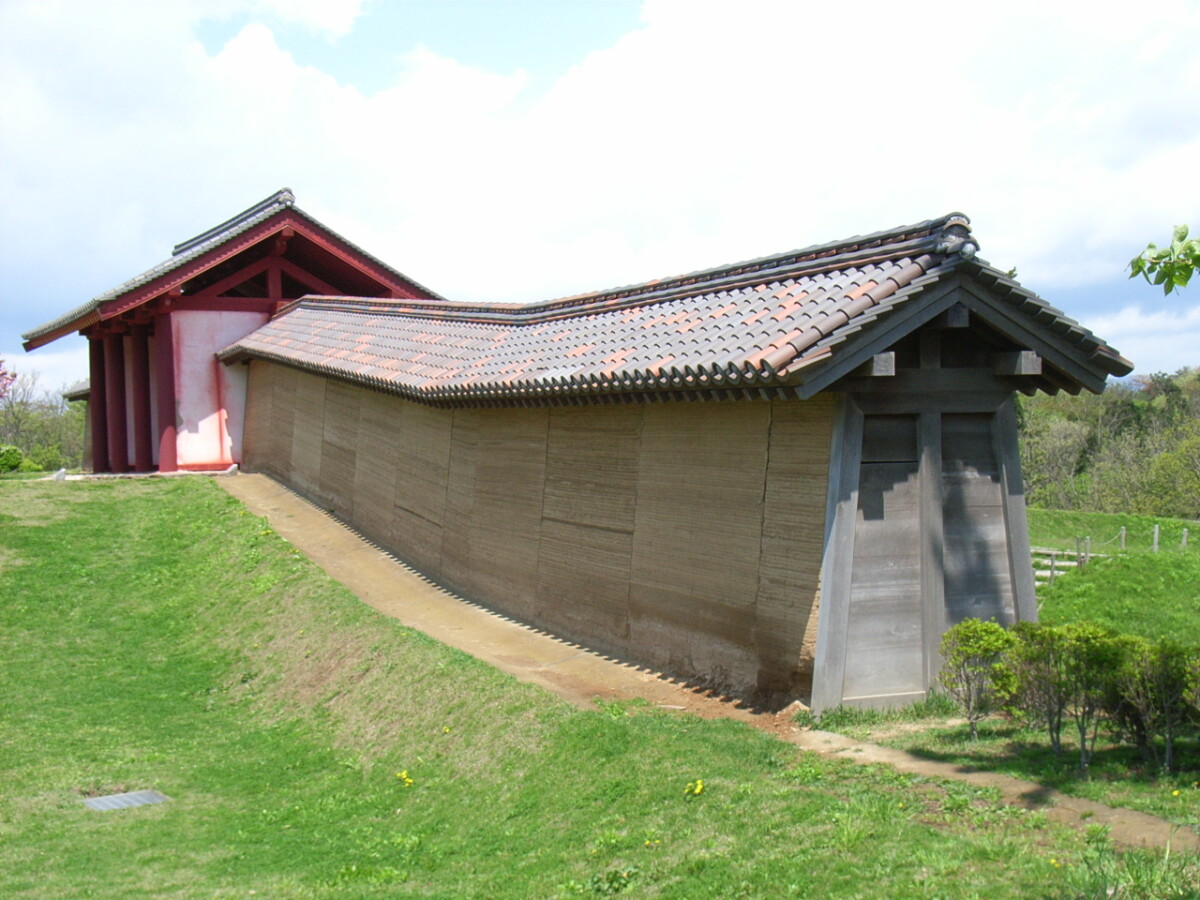
Before the Satake clan's revocation, Akita City was the forefront of the Northern powers [Akita Prefecture]
table of contents
- 1 Ancient Akita Castle served as a front-line base during the battle against the northern tribes (Ezo)
- 2 "Akita Castle" is also responsible for trade with foreign countries as an administrative organ of the Imperial Court.
- 3 A flush toilet found at Akita Castle. The discovery of the century was found in the filth that was washed away.
- 4 Excavation and restoration of the remains of Akita Castle is underway at the Akita Castle Ruins Park.
- 5 Government offices whose scale and building layout are gradually becoming known
- 6 There are gates on the east, west, north, south, and the east gate was restored.
- 7 ``Akita Castle Ruins History Museum'' where you can see excavation survey materials and the overall state of Akita Castle.
- 8 During the Sengoku period, the Akita clan ruled. During the Edo period, he moved to Hitachi Province in exchange with the Satake clan.
- 9 Minato Castle, abandoned by Yoshinobu Satake
The Akita city 's website states that the history of Akita City began in 1602 (Keicho 7).
Satake Yoshinobu a daimyo of Hitachi Province (Ibaraki Prefecture) , was ordered by the shogun Tokugawa Ieyasu to change his country (transferred/Tenpo) to Akita, and came to Akita.
As soon as Yoshinobu came to Akita, he built Kubota Castle and maintained the castle town. This has developed into the current city center of Akita City.
So, what was the Akita City area like before Yoshinobu was transferred?
Ancient Akita Castle served as a front-line base during the battle against the northern tribes (Ezo)
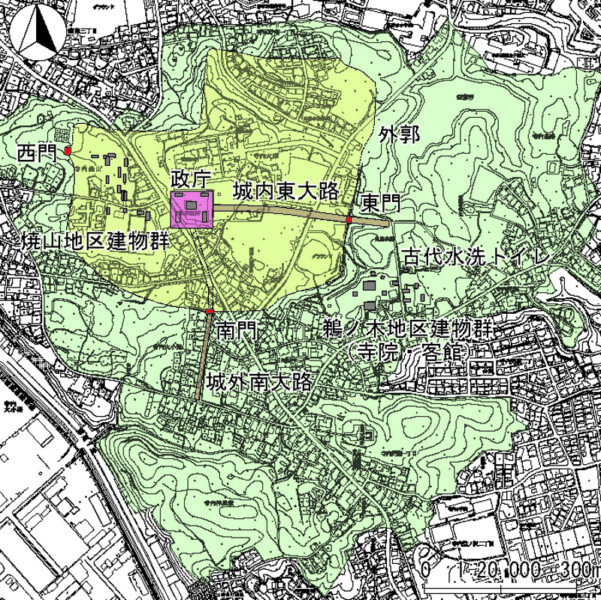
Akita first appears in the Nara period history book Nihon Shoki (supposedly completed in 720). At that time, the Yamato Imperial Court, which wanted to control the Tohoku region, was invading the living area of the indigenous Emishi people. The Imperial Court dispatched troops from Nara and pushed the Ezo people further and further north, expanding the territory of the Imperial Court. There is a record that in the mid-600s during the Asuka period, Abeno Hirafu led a naval force on an expedition to the Tohoku region.
Before 700 years ago, the front line of the Ezo conquest on the Japan Sea side was located downstream of the Mogami River in Yamagata Prefecture. Dewa no Saku was built. After that, the conquering army advanced north for more than 100 km, and in 733, the Dewa fence was moved to Takashimizu in Akita (Terauchi Takashimizu Park, Akita City). came to be called Akita Castle around 760
"Akita Castle" is also responsible for trade with foreign countries as an administrative organ of the Imperial Court.
Akita Castle was the northernmost castle fence. It is thought that the role of the castle fence was not only to protect against the northern forces (Ezo), but also to serve as a local administrative organ, as well as for trade and diplomacy. The person in charge of Akita Castle was given the high-ranking official position of Akita Jonosuke .
In particular, during the period when the Tang Dynasty (618-907) ruled mainland China, there was a small country called Bokkai (698-926) in the northeast. There are records that Balhae sent missions to Japan 34 times around the 8th century. However, it was not clear which ports they called at or where they traded. It was assumed that it was a port in Tohoku or Hokkaido based on its location, but excavations at Akita Castle revealed that it was Tsuchizaki Minato (Tsuchizaki Port, Akita City), and Akita Castle was the center of trade. That's what I've come to understand.
A flush toilet found at Akita Castle. The discovery of the century was found in the filth that was washed away.
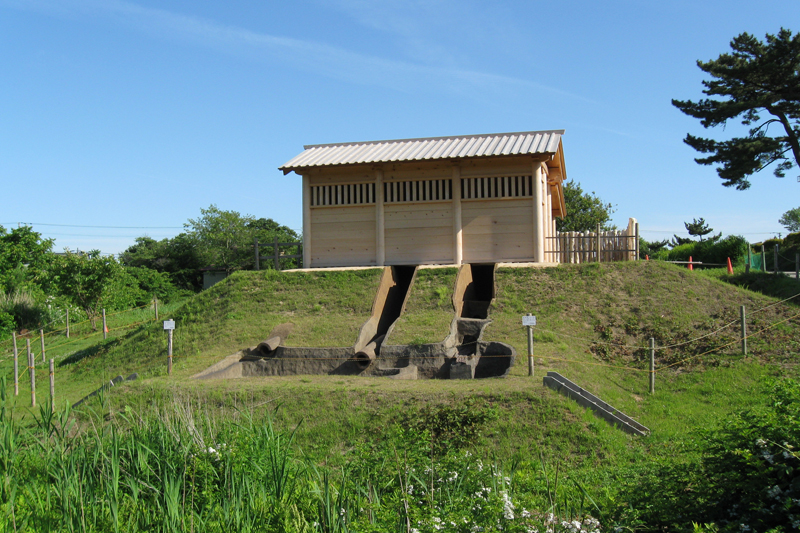
Akita Castle has been excavated more than 100 times since 1972. During the 63rd excavation survey from 1994 (Heisei 6) to 1995 (Heisei 7), flush toilets, , were discovered. Furthermore, in the waste that had apparently been flushed down the toilet, eggs of a parasite that grew on pigs, which was not eaten in Japan at the time, were found.
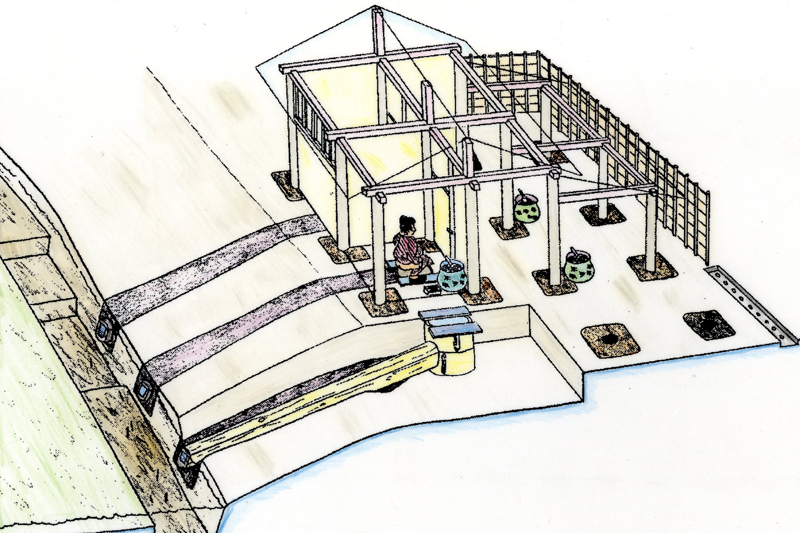
The flush toilet was located in a corner of the area where a state guesthouse and temple were built, and as the building was a magnificent one unlike any other in the capital, it is assumed that it was used by a very important person. Eggs of parasites that should not have existed in Japan were found in the accumulated filth, which suggests that Akita Castle was visited by envoys from foreign countries, especially those from Bokkai, where they ate pigs. became.
Excavation and restoration of the remains of Akita Castle is underway at the Akita Castle Ruins Park.
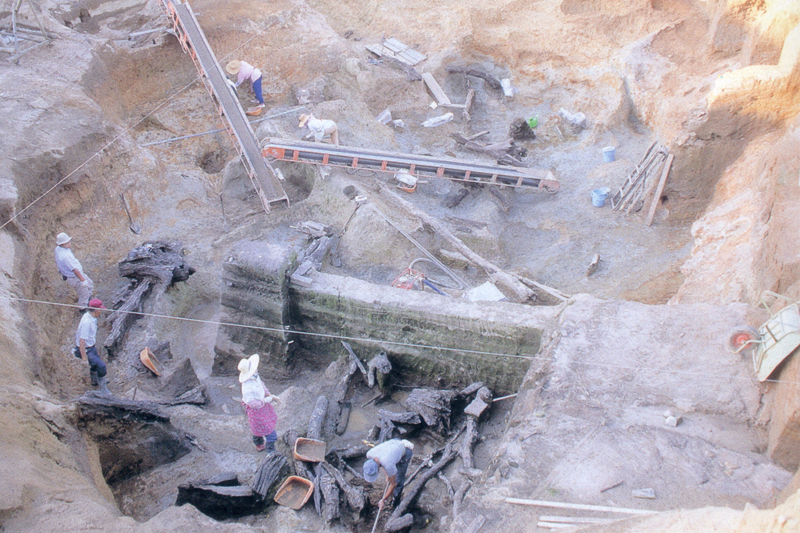
Although Akita Castle has been lost, excavations have yielded many results in addition to flush toilets. In 2016 (Heisei 28), the Akita City Akita Castle Ruins Historical Museum opened, excavated materials were made available to the public, and the remains of Akita Castle were restored in the Akita Castle Ruins Park
Government offices whose scale and building layout are gradually becoming known

Akita Castle had a wall that was approximately 2.2 km in circumference, with an additional wall inside which housed the government office. The wall was about 77 meters north to south and about 94 meters east to west, and the side shrines were arranged symmetrically around the main shrine. The scale of each building was large, and it is said that they were placed in the same layout as Heijo-kyo and Heian-kyo to show the prestige of the Imperial Court.
There are gates on the east, west, north, south, and the east gate was restored.

It is believed that the outer wall had gates in the north, south, east, and west, but the north gate has not yet been discovered. Part of the east gate and Tsukiji wall have been restored.
Many other building ruins were also found in the area where the flush toilet was excavated. It is thought that these may have been temples or guest houses (guest houses). Restoration will likely take a little longer, but judging from the pillar holes, it appears to be a very splendid building, one that has never been seen before in the capital.
``Akita Castle Ruins History Museum'' where you can see excavation survey materials and the overall state of Akita Castle.
The Akita Castle Ruins Historical Museum is a museum that exhibits valuable artifacts and materials that have been excavated so far, and provides a clear understanding of the role of Akita Castle and the structure of its buildings.
The materials on display include wooden tablets (with dates and names written in ink), roof tiles, ancient documents, weapons, and pottery that have been used to identify the location of the castle, and are organized by purpose and chronological order to provide a comprehensive overview of Akita Castle. The history is becoming clearer. Also. The role of Akita Castle is visualized and introduced.
Restoration work on Akita Castle is scheduled to continue in the future as well as excavations. It is hoped that we will be able to further elucidate what the northernmost castle was like.
By the way, Akita Castle's role as an ancient castle fence ended around the end of the Heian period (late 10th century) when the Yamato court took control of most of the Tohoku region, but Akita Castle continued as a local institution of the court until the Muromachi period. , and has since been abolished.
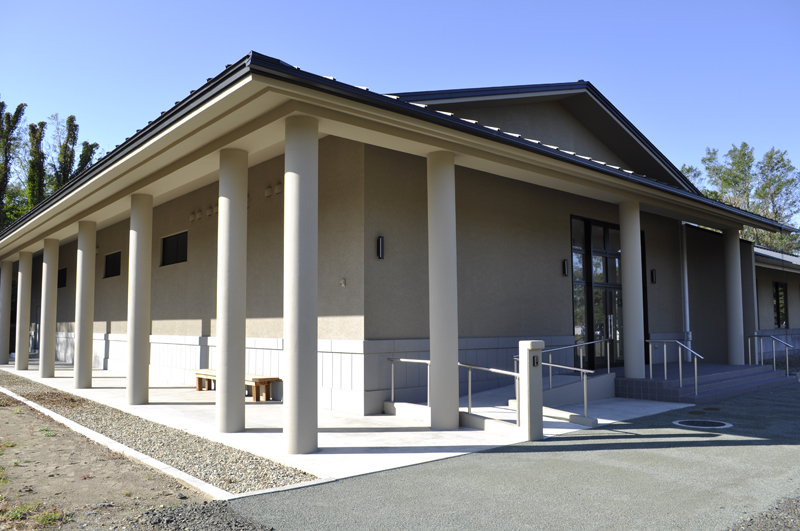
INFORMATON
- Facility name: Akita City Akita Castle Ruins History Museum
- Location: 9-6 Terauchi Yakeyama, Akita City, Akita Prefecture
- Phone number: 018-845-1837
- Opening hours: 9:00-16:30
- Closed: Year-end and New Year holidays (December 29th to January 3rd)
- Admission fee: General 210 yen, free for high school students and younger
- Facility name: Akita Castle Ruins Historic Site Park
- Open all year round
- Free admission
- URL: Akita Castle Ruins Historical Museum
- access:
- Railway: Approximately 20 minutes by bus from Akita Shinkansen/JR Ou Main Line Akita Station, under the Akita Castle Ruins History Museum-mae bus stop
- Car: Approximately 15 minutes from Akita Expressway Akita Kita IC
GOOGLE MAP
During the Sengoku period, the Akita clan ruled. During the Edo period, he moved to Hitachi Province in exchange with the Satake clan.
During the Sengoku period, powerful clans appeared in various places, built bases (castles), and fought for power. The Ando clan strengthened its influence from the Dewa region to the Tsugaru region, and around the end of the Sengoku period, the Ando clan, which had been divided into Tsugaru (Hiyama Ando clan) and Dewa (Minato Ando clan), was unified, and Tsuchizaki Minato (Akita Minato Castle was built in Tsuchizaki Port, Tsuchizaki Prefecture, At that time, the Ando clan took the name Akita Josuke and changed their name to the Akita clan
During the Edo period, the Satake clan was transferred to Akita by order of the shogunate, and at the same time, the Akita clan moved to Hitachi Province, which was originally ruled by the Satake clan. Forty years later, he changed countries again and moved to Miharu (Miharu Town, Fukushima Prefecture), where he ruled Miharu as the Miharu Domain until the Meiji Restoration.
Minato Castle, abandoned by Yoshinobu Satake
Yoshinobu Satake, who came to Akita, initially made Minato Castle his residence. However, for the Satake clan, a feudal lord who ruled Hitachi Province for 470 years and was given 540,000 koku by Toyotomi Hideyoshi, the castle of the Akita clan, which was a small feudal lord with 50,000 koku, was the perfect place to house the many vassals they brought with them. It was too small for me to move around. Therefore, they decided to build a new castle in Kubota, which is now known as Senshu Park Construction of the castle began in 1603 and continued until around 1631.
Kubota Castle was completed, Minato Castle was abandoned and Tsuchizaki Shinmeisha was built on its site.
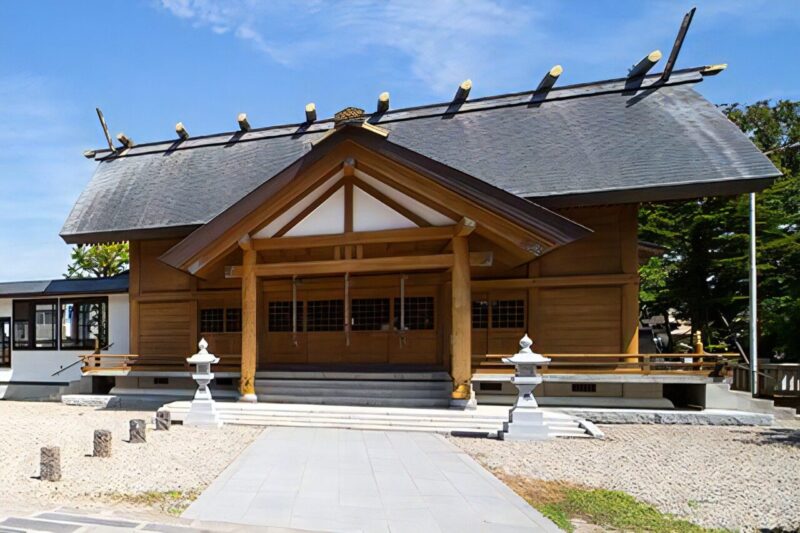
INFORMATON
- Facility name: Minato Castle Ruins/Tsuchizaki Shinmeisha
- Location: 3-9-37 Tsuchizakiko Chuo, Akita City, Akita Prefecture (Tsuchizakiko Station Street, Akita City)
- Phone number: 018-845-1441
- URL: Minato Castle Ruins/Tsuchizaki Shinmeisha Shrine
- access:
- Railway/Approximately 4 minutes walk from Tsuchizaki Station on the JR Ou Main Line
- Car: Approximately 15 minutes from Akita Expressway Akita Kita IC</






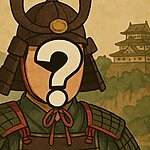
![The development of Akita city began in Tsuchizaki - Tsuchizaki Minato at the mouth of the Omono River, which developed as a center of distribution [Akita Prefecture] 33192efe1595a3309d4e9325ae7a5621](https://jp.neft.asia/wp-content/uploads/2023/12/33192efe1595a3309d4e9325ae7a5621-150x150.jpg)
![The foundation of Akita City is the castle town of Kubota Castle, created by Satake Yoshinobu [Akita Prefecture] Yoshinobu Satake](https://jp.neft.asia/wp-content/uploads/2024/01/Satake_Yoshinobu-150x150.jpg)
![Yurihonjo City, where Honjo, Kameda and Yajima domains were intersected between the Kubota and Shonai domains [Akita Prefecture] FF2C8AAA4350E7E179F97F97B38B3A2302F-1](https://jp.neft.asia/wp-content/uploads/2024/04/ff2c8aaa4350e7e179f97f38b3a2302f-1-150x150.jpg)
![Akita Cedar, which has been close to people's lives since ancient times, is a close look at the reasons and secrets [Akita Prefecture] Ninfu Mizusawa Cedar Rare Population Protection Forest (Noshiro City, Akita Prefecture)_Travel Tohoku](https://jp.neft.asia/wp-content/uploads/2025/05/792bcbe7d9fd514753f4deeaca3de33f-150x150.jpg)
![[Akita's Sasara Dance: Part 2] Is the Sasara Dance the beginning of a comforting Lord Satake, who is disappointed? Tsurugata_Noshiro City](https://jp.neft.asia/wp-content/uploads/2025/05/6931c5264258b88a3f542ff2ba1ae6a6-150x150.jpg)
![Kakunodate, which was founded by the Tozawa clan during the Sengoku period and built by the Ashina clan during the Edo period [Senboku City's highlights ②] Cherry blossoms on the banks of the Hinokinai River - Night cherry blossoms_Akita Fan](https://jp.neft.asia/wp-content/uploads/2025/07/98886c5b97b9b3f8d61f0ae473e583b1-150x150.jpg)
